ZWART VIERKANT
■■■
CD BOOKLET
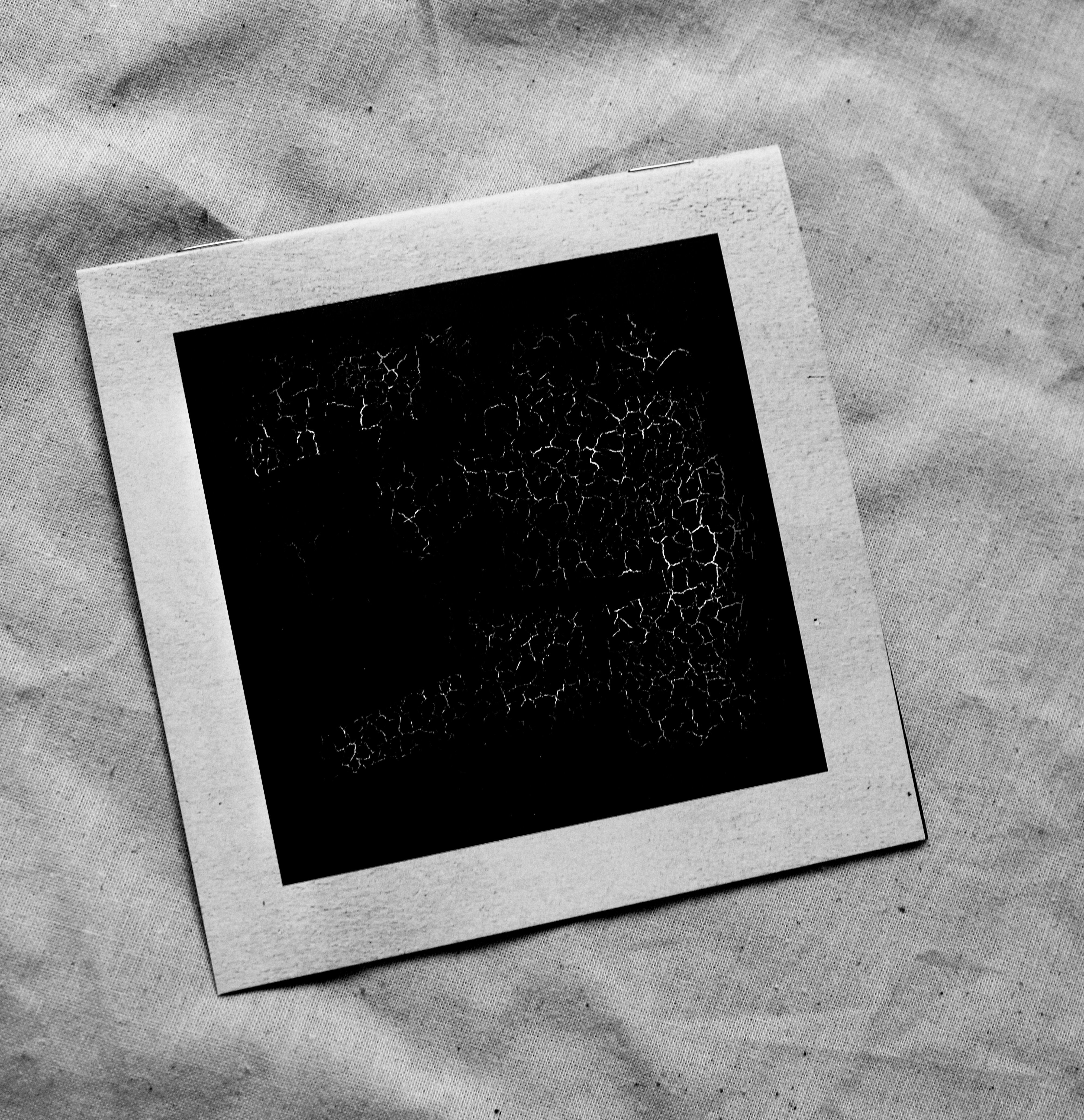
Front cover of the ‘Zwart vierkant’ CD booklet. ‘Black Square’ (1915) by Kazimir Malevich (1879 - 1935)
The booklet of the CD version of ‘Zwart vierkant’ contains references to the the story’s concept, as well as the artists who inspired it. The booklet’s design was heavily inspired by Dadaist art: especially that of artists such as Kurt Schwitters (1887 - 1948), Theo van Doesburg (1883 - 1931) and Paul van Ostaijen (1896 - 1928). Dadaism was a reaction to the intense experiences of those who witnessed the First World War. It is in many ways a total deconstruction of traditional aestheticism and ideology. Dadaism embraced absurdity and senselessness through the destruction of all that was familiair.
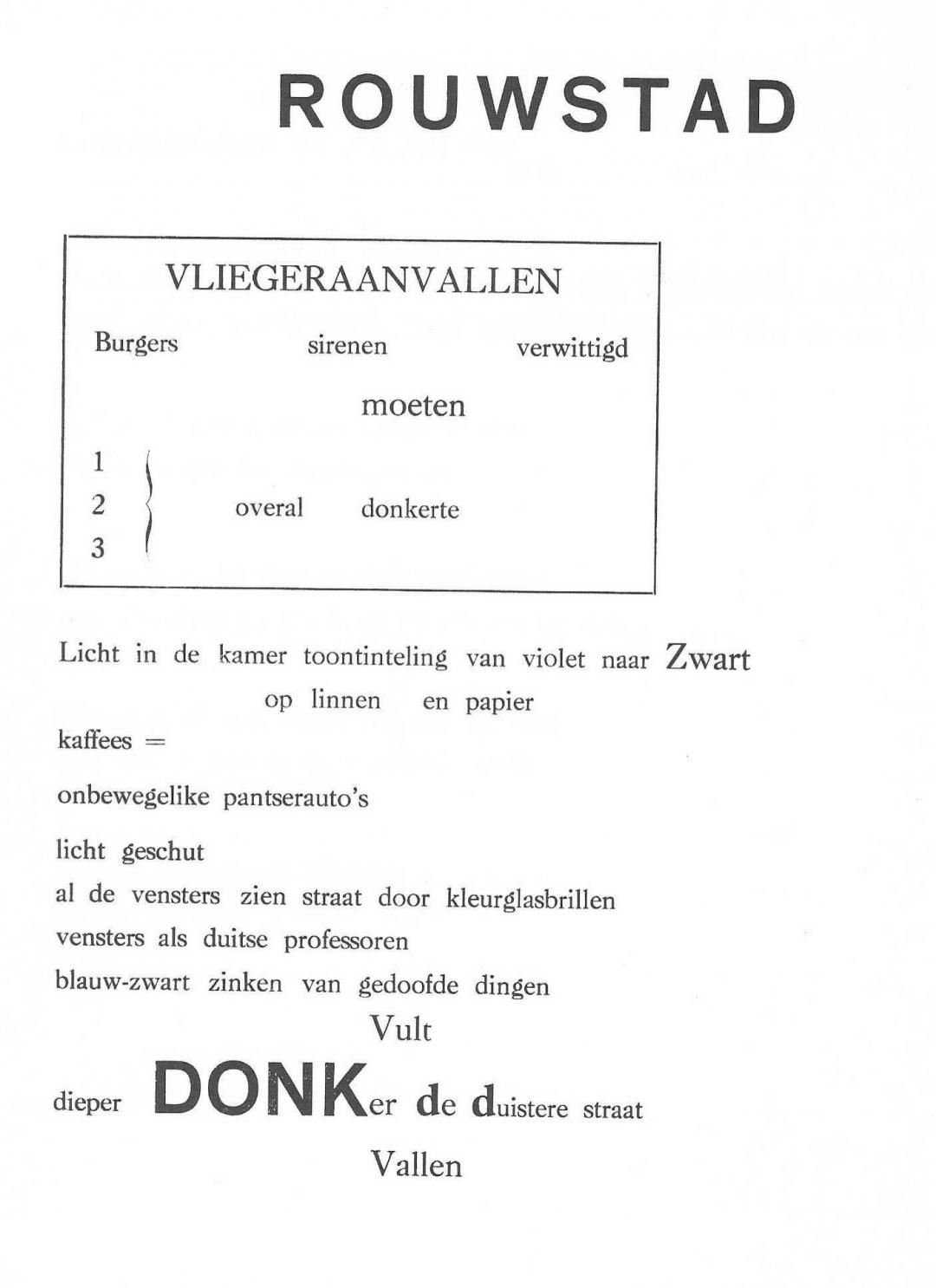
‘ROUWSTAD’ (1921) , by Paul van Ostaijen (1896 - 1928)
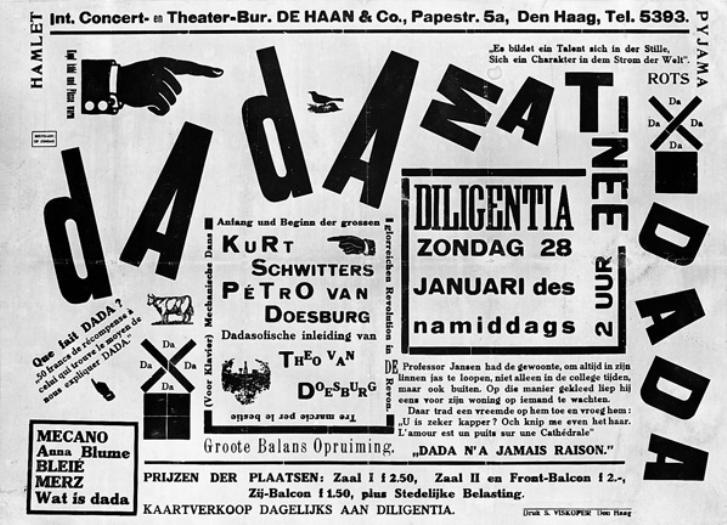
‘Poster for Dada Matinée’ (1923) by Theo van Doesburg (1883-1931)
I.
‘Maria Segovia’, the album’s opening track, deals with Pedro’s first obsession: the daughter of his parents’ business partners. The No.1 in the booklet refers to Maria Segovia being the first of the women in the story. Maria represents arousal and sexual perversion in its infant state. Later in the story, Béatrice Charron and Claire Sophie ‘Chauchat’ Petit draw Pedro further toward intense sexuality, and, ultimately, abstraction and the death of flesh.
Maria Segovia is beaten on her behind every night by her religious mother, as punishment for her sins. This perverted ritual is later repeated and mocked by Pedro and Maria. The crosses in the booklet represent Maria and Pedro’s deep connection with Christianity.
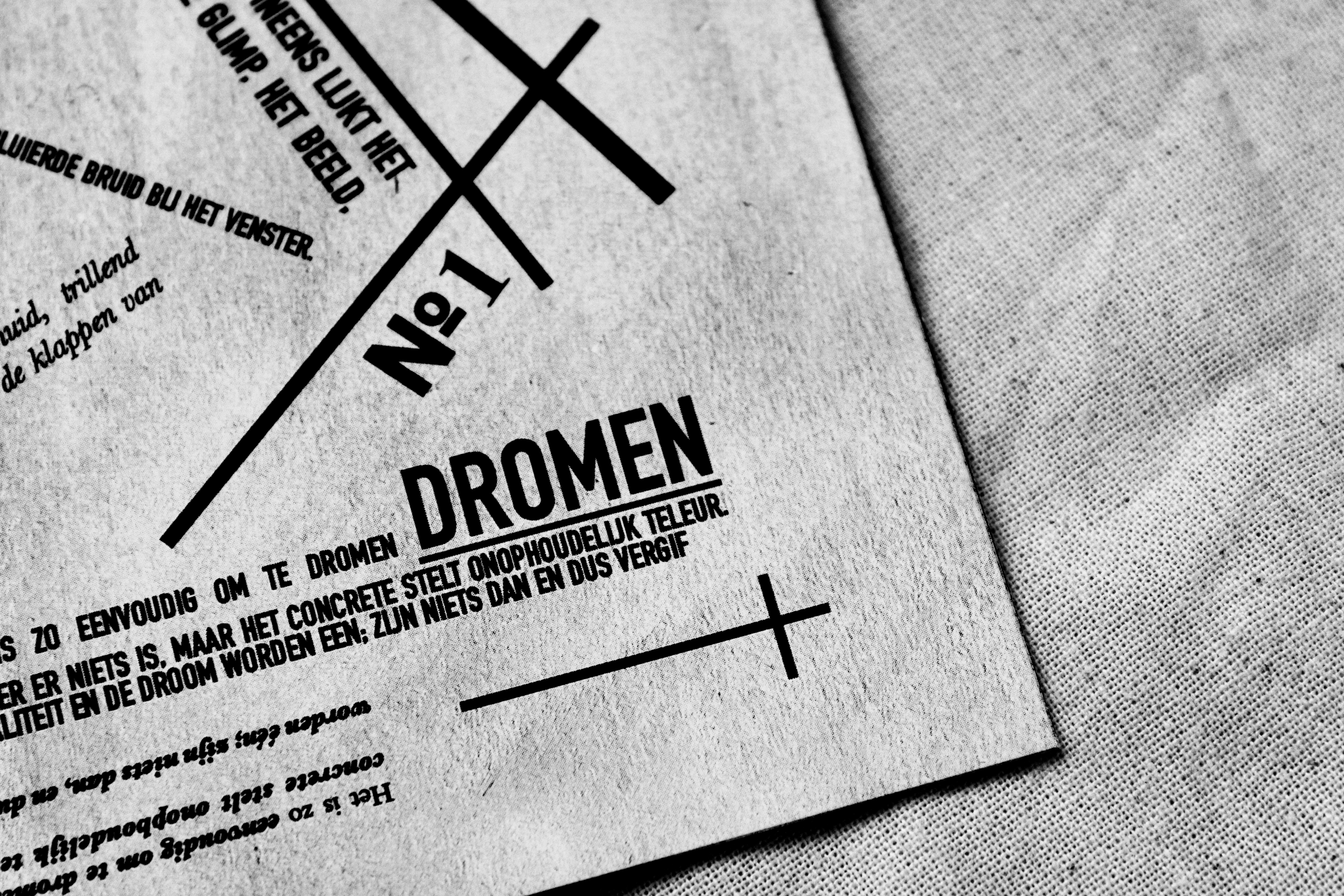
Maria Segovia
II.
The lyrics of ‘Het schuimspoor van de ramp’ are in the shape of a broken train. The design was inspired by the famous photo of the Montparnasse Derailment of 1895 (see image below). The track’s lyrics deal with Pedro’s journey from Jerez de la Frontera (Spain) towards Paris. During his travels, he meets Béatrice Charron: a young, deceitful woman, who both arouses and frightens Pedro. The lyrics are divided into two parts:
I. Bewegingen (Movements)
II. Ontmoeting met het roofdier (Encounter with the Predator)
The second part, dealing with Béatrice Charron, penetrates and divides the train cart, referring to the deadly eroticism of Charron’s character.
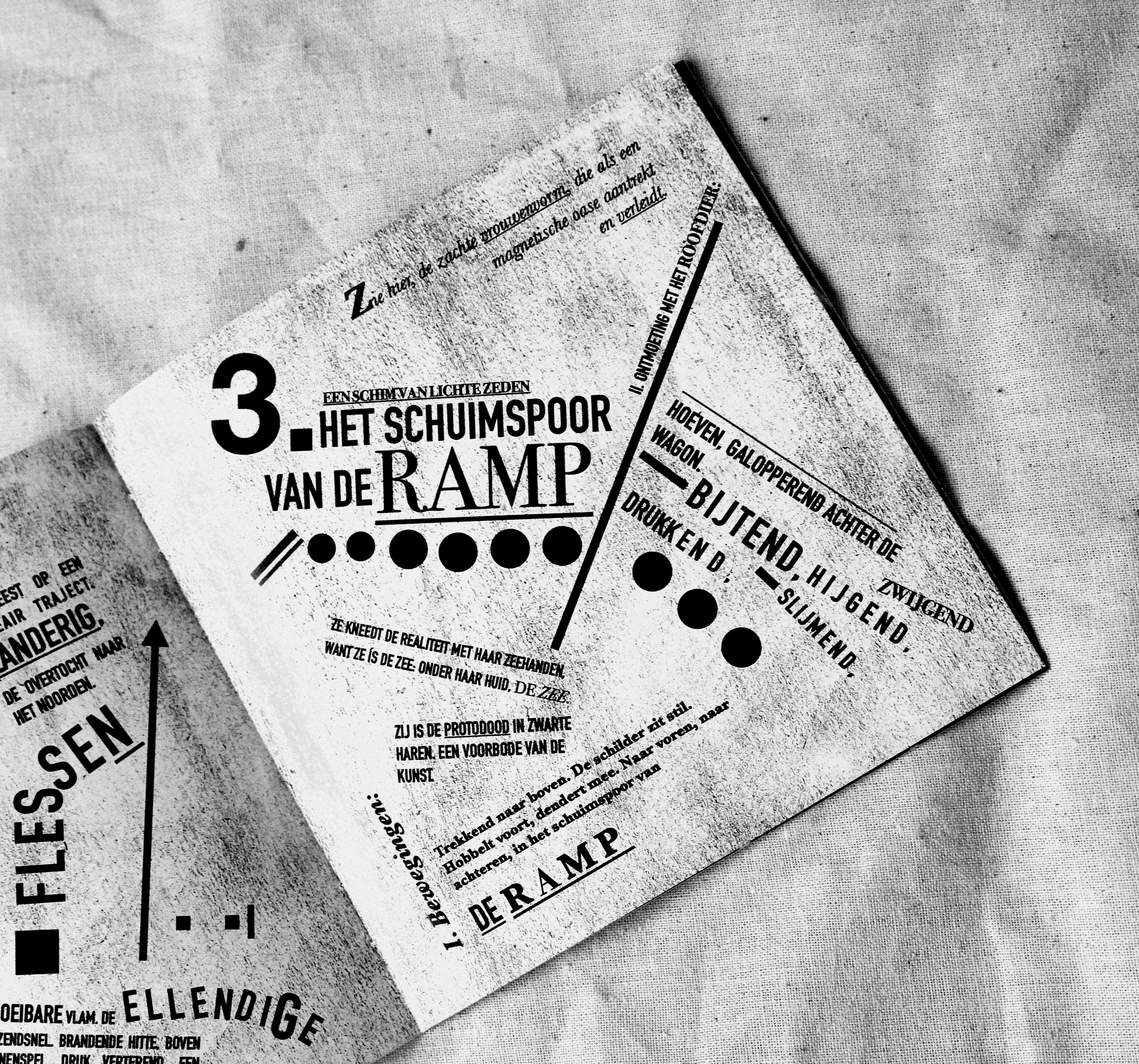

Het schuimspoor van de ramp / The Montparnasse Derailment
III.
‘El Greco inToledo’ deals with the Mannerist painter El Greco (1541 - 1614) and the influence his work has on Pedro. El Greco’s year of birth is shown on the page below.
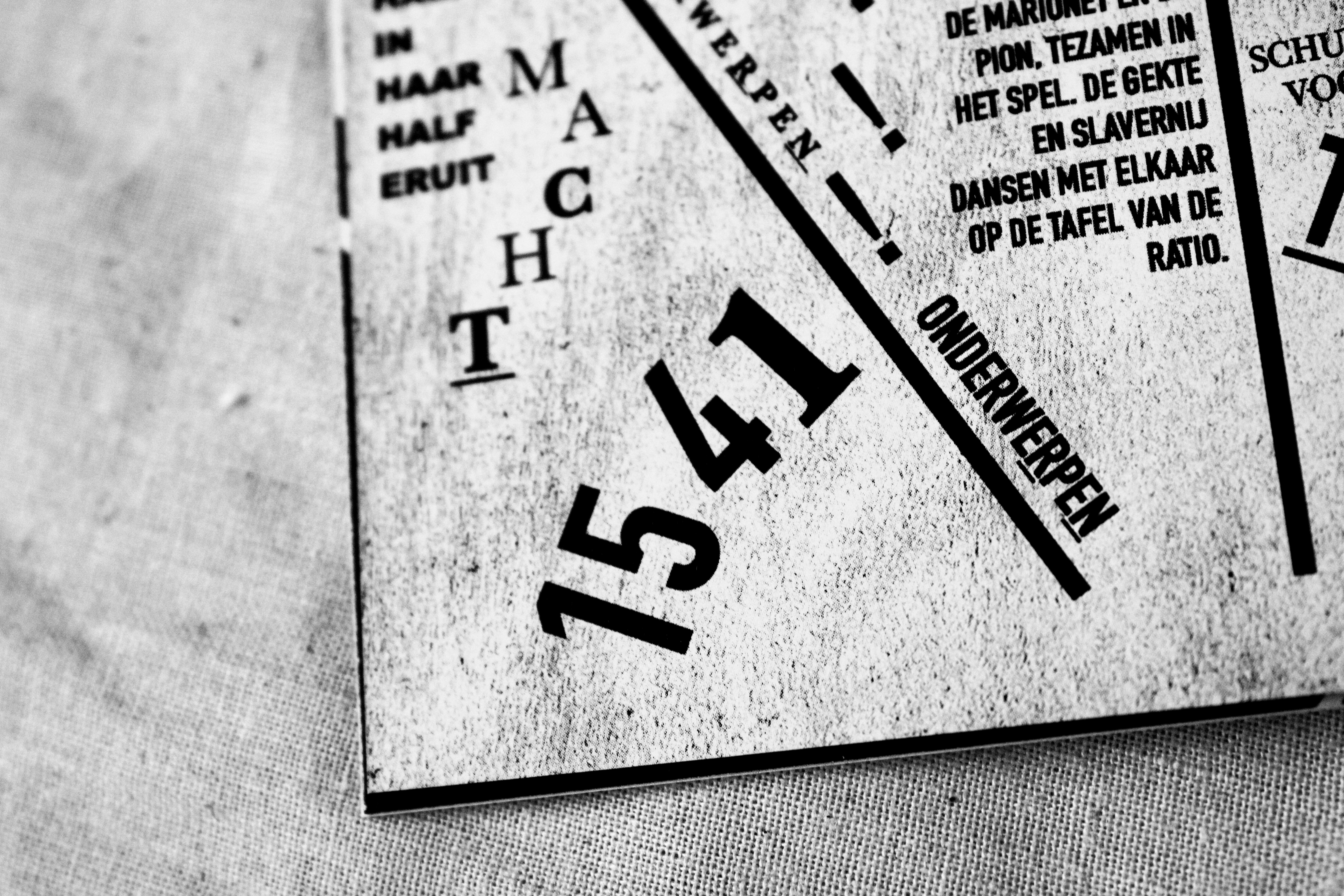
El Greco in Toledo
‘El Greco in Toledo’s background sounds were recorded in the Toledo Cathedral in July 2018. During various parts in the song, the cathedral’s ‘one-armed clock’ can be heard. It is also refered to in the lyrics, as well as in the booklet’s design. The clock and its arm can be seen on the picture below. The word that makes up its shape is ‘ONDERWERPEN’, or ‘TO SUBMIT’. This references both Pedro’s devotion to El Greco’s art and his submission to the intense sexuality of Béatrice Charron.
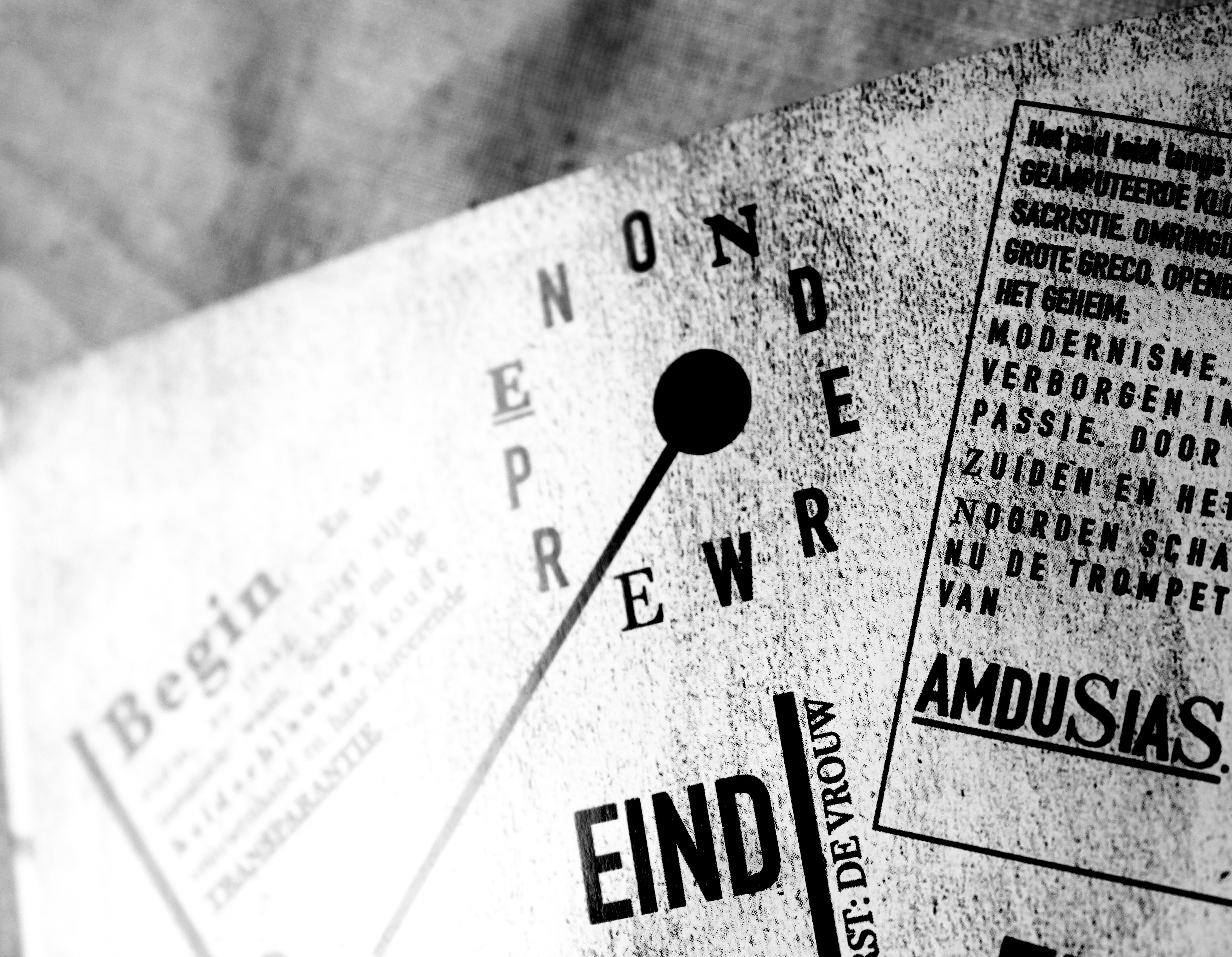
El Greco in Toledo
IV.
‘De onnoemelijke verleidelijkheid van de bezwijkende deugd’s title is taken from a line from Gustave Flabert’s (1821 - 1880) literary masterpiece ‘Madame Bovary’ (1856). The novel tells the story of Emma Bovary, a young French woman, obsessed with Romanticism, who loses herself in her obsessions and desires. The novel was a large source of inspiration for ‘De protodood in zwarte haren’ and ‘Zwart vierkant’. Romanticism can in many ways be seen as an important precursor to Romanticism. In this sense, Emma Bovary is very much related to Pedro. She is his philosophical precursor.
The title is taken from the following passage:
‘Léon with solemn steps walked along by the walls. Life had never seemed so good to him. She would come directly, charming, agitated, looking back at the glances that followed her, and with her flounced dress, her gold eyeglass, her thin shoes, with all sorts of elegant trifles that he had never enjoyed, and with the ineffable seduction of yielding virtue.’
The booklet contains the word ‘Flaubert’ just below the title, flipped upside down and mirrored.
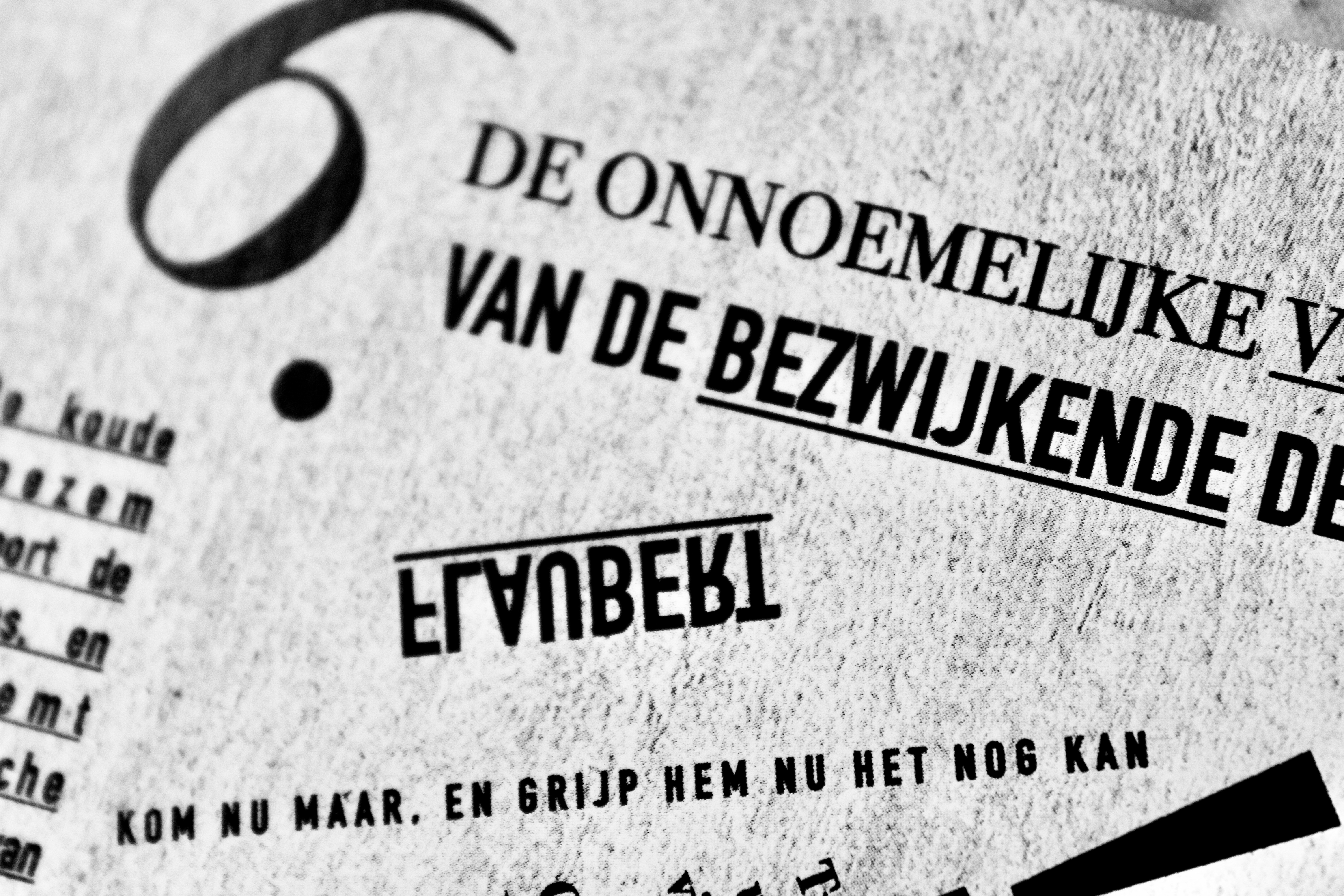
De onnoemelijke verleidelijkheid van de bezwijkende deugd
V .
‘Sierlijke schaduwmond’, the album’s closing track, deals with Pedro’s obsession with Claire Sophie ‘Chauchat’ Petit: the third woman of the album’s story. During the quiet section of the track, ‘II. Nacht in Parijs, 1924’, Pedro and Chauchat stay at a hotel in Montmarte, Paris and spend the night together. The word ‘WAPPER’ symbolizes the curtains of the hotel room, blowing the midnight wind.
Using typography in order to express feelings, evoke atmospheres or create shapes was done very much by the Dadaists, and can still be found in contemporary art and advertisment.

Sierlijke schaduwmond